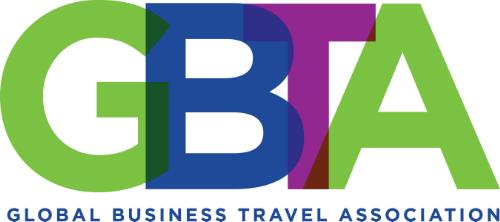Business travel recovery in 2021 proceeded at a slower, more cautionary pace than expected from a year ago. However, global business travel spending is expected to surge in 2022 with full recovery expected in 2024–ending the year on pace with the 2019 pre-pandemic spend of $1.4 trillion, and a year sooner than previously forecast, according to Global Business Travel Association’s BTI Outlook.

The report outlines four conditions necessary for full recovery in global business travel: 1) the global vaccination effort, 2) national travel policy, 3) business traveler sentiment, and 4) corporate travel management policy. The recovery remains highly dependent on the vaccine rollout, employees’ return to the office, and a normalization of travel policies on both the national and corporate levels. Travel managers will also face the challenge of juggling duty of care with rising costs, sustainability priorities, and new considerations on the ROI of business travel.
Forecasts and Analysis Highlights (in US dollars)
- After declining 53.8 percent in 2020 to $661 billion, global expenditures are expected to have rebounded 14 percent in 2021 to $754 billion. This was more slowly than forecast in GBTA’s previous BTI Outlook report issued in February 2021.
- Despite recovery setbacks in 2021, a year-over-year surge of 38 percent is expected in 2022 as recovery and pent-up demand kicks into a higher gear, bringing global business travel spending back to over $1 trillion.
- Recovery will continue into 2023, with global spending rising 23 percent year-over-year as even more international and group travel comes back online.
- By 2024, global business travel is forecast to have made a full recovery, ending the year at $1.48 trillion or just above the 2019 pre-pandemic spend of $1.4 trillion.
- In 2025, global business travel growth is forecast to slow to 4.3 percent–just below the 10-year average growth rate of 5.1 percent coming into 2020–ending the year at a forecasted $1.5 trillion.
However, persistent COVID-related threats and disruptions, supply chain strains, labor shortages, rising inflation, increased costs, and lagging recovery in Asian markets are just a few of the risks for continued on-target recovery. Additionally, yet to be determined are the potential impacts of emerging factors including broad adoption of remote working models, long term cuts or elimination of business trips and travel volume, and the increased focus on sustainability practices and policies for business travel.
 GBTA Executive Director Suzanne Neufang
GBTA Executive Director Suzanne Neufang
“Of any year we’ve issued the BTI Outlook forecast, this one was the most anticipated and it’s no surprise,” said GBTA CEO Suzanne Neufang. “The business travel industry recognizes there are factors, related to COVID and beyond, that could impact the road ahead over the coming years. However, there is optimism overall as the industry, companies, and travelers worldwide lean into recovery and the much-needed return to business travel.”
Other key findings from GBTA’s BTI Outlook include analysis of 2021 challenges for the business travel industry as well as recovery outlook into 2025.

Business Travel Faces Headwinds
- North America led the recovery, the US in particular, rebounding 27 percent in 2021. Business travel markets in Latin America, Middle East and Africa (MEA), and Asia-Pacific (APAC) all picked up 15 percent to 20 percent growth in 2021.
- European markets have lagged in 2021. Emerging Europe is expected to gain only 10 percent and for the region of Western Europe, business travel expenditures for 2021 are expected to fall 3.8 percent from 2020 levels.
- Recovery in Asia Pacific has been slower, due to lagging border re-openings and a high dependence on international business travel. China’s expected growth was downgraded last year due to challenges posed by financial and other issues which could signal larger risks.
- Business travel in Latin America is performing relatively better in terms of percentages—recognizing that volumes vary significantly across global regions—boosted by fewer government restrictions and travelers’ desire and confidence to return to business travel. However, rising public debt and interest rates, declining credit ratings, and lower vaccination rates could pose future threats for Latin American business travel.
Corporate Views
- About half (52 percent) of respondents expect their company’s business travel spend to reach 2019 levels in 2022.
- When asked about the importance of business travel, CFOs felt the top return-on-investment reasons for business travel are sales and business development (68 percent), internal business planning and strategy (50 percent), client account management (48 percent), and employee training and development (48 percent).
- Among 400 global business travelers polled, 86 percent report that they need travel to accomplish their business goals, and a majority (81 percent) believe that their volume of domestic business travel will be greater or on par in 2022 than it was prior to the pandemic.
- More than half (54 percent) miss traveling and hope to travel more often in the future. However, 43 percent wouldn’t mind traveling less in the future, whether they indicated they miss it or not.
- Four in five (81 percent) of business travelers say their company requires vaccines for travel and in-person meetings.
GBTA members can download a full copy of the BTI Outlook on the GBTA members-only hub.
In more good news, the association reports that its annual convention, held last week in Orlando, attracted more than 3,500 professionals from 20+ countries, and featured 170+ travel industry and expert speakers, 50 education sessions, and 200+ exhibitors.
Visit gbta.org for more information.
[11.23.21]

